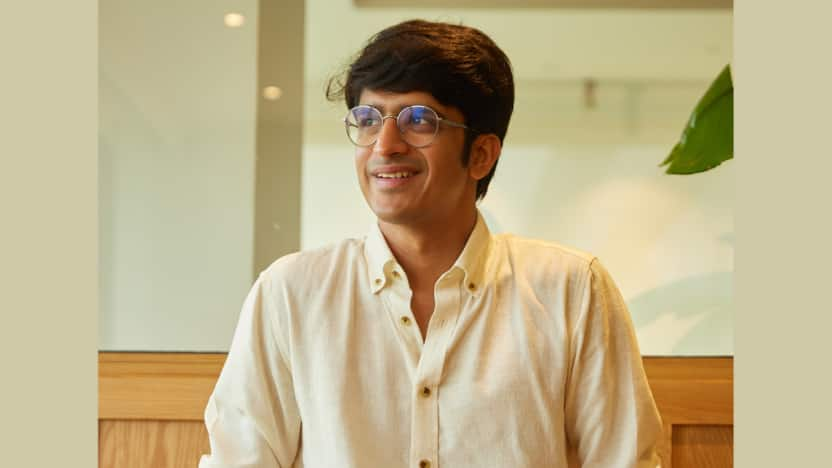Monk-E’s Viraj Sheth is giving small, passionate creators the same backing as big names—pairing niche talent with global brands to chase engagement, ROI, and sustainable growth.

Viraj Sheth, co-founder and CEO, Monk-E
After eight years in the creator industry, Viraj Sheth, co-founder and CEO of Monk Entertainment, an influencer and content marketing company founded in 2017, has worked with some of India’s most recognisable influencers, helping them secure resources, visibility, and platforms that were once out of reach. But somewhere along the way, a question began to nag him—what more could be done for the ecosystem that had given him so much?
That thought became the foundation for his latest campaign. Instead of chasing high-follower accounts, Sheth and his team decided to offer the same “luxury treatment” to smaller creators—those without large audiences but with the passion, consistency, and discipline to create standout work.
“We began searching for such voices—people who were consistent, driven, and creative,” Sheth told BrandWagon Online. The search led to three names: Ryan, Awdoot, and Aahna, each from a different category. Ryan, with around 3,500 followers, had caught attention with a bold metro makeup reel. Aahna, in the fashion commentary space, had a raw, authentic voice that Sheth felt could be scaled up. Awdoot was making his mark in fitness but needed a push to expand further. “The common thread was potential, not follower count,” he said.
The campaign’s impact wasn’t limited to the chosen creators. “I gained a few thousand followers, but more importantly, the reel drew attention from across the industry—Bollywood actors, producers, and brand leaders reached out,” Sheth said, noting that many were surprised to learn his team worked on such projects.
Beyond campaigns, Sheth was quick to point out that the creator economy now stretches far beyond traditional brand deals, which he says remains concentrated among the top 20% of influencers. “New revenue streams are emerging,” he explained. “YouTube Shopping lets creators link Myntra or Flipkart products in videos and earn commissions. Amazon’s FIP programme rewards product endorsements. Then there’s UGC—where brands hire smaller creators to make content without posting it on their own handles. This opens monetisation for creators at all follower levels.”
It’s a shift that also makes sense for brands. “For the price of one big influencer, they can work with multiple smaller creators and spread risk,” Sheth said. “Almost everyone can get views today, but the real question is the value of those views. That’s where ROI takes centre stage.”
Measuring ROI, however, is not one-size-fits-all. “Some brands look at cost per view or cost per engagement, others—like Apple or Airbnb—prioritise brand alignment. Our role is to bridge these needs while preserving creators’ freedom,” he said.
After modest profit growth in FY24, Sheth was confident about FY25. Monk Entertainment reported a modest 2.2% rise in FY24 revenue to Rs 97.8 crore, while net profit jumped 58.9% to Rs 7.23 crore.
The focus will be on expanding monetisation avenues for creators and addressing mental health in the industry through partnerships with therapy providers and training programmes. On the brand side, he planned to strengthen direct relationships with global players such as Unilever, Coca-Cola, and Amazon, backed by what he called a “deep understanding of internet culture—knowing what’s trending today and what’s outdated tomorrow.”
Behind the scenes, his team was developing an internal tool to capture and interpret creator and brand data, from demographics to engagement. “Raw numbers don’t drive results—insight does,” he said.
Currently, the company maintains an exclusive roster of about 120 creators, intentionally kept small to ensure personalised support. Campaigns, however, draw from a database of millions—from nano influencers to celebrities—tailored to client needs.
Also Read: Underdog Strategy, Premium Goals: Under Armour’s India Story
Looking ahead, Sheth saw the Indian influencer marketing industry growing to about Rs 7,000 crore in the coming years, with his own company targeting Rs 500 crore in three to four years. But he insisted growth for growth’s sake isn’t the objective. “We want to build sustainably, with a strong company culture that keeps work enjoyable. Chasing numbers without balance leads to burnout, and that’s not the kind of organisation we want to be,” he concluded.
By continuing you agree to our Privacy Policy & Terms & Conditions
